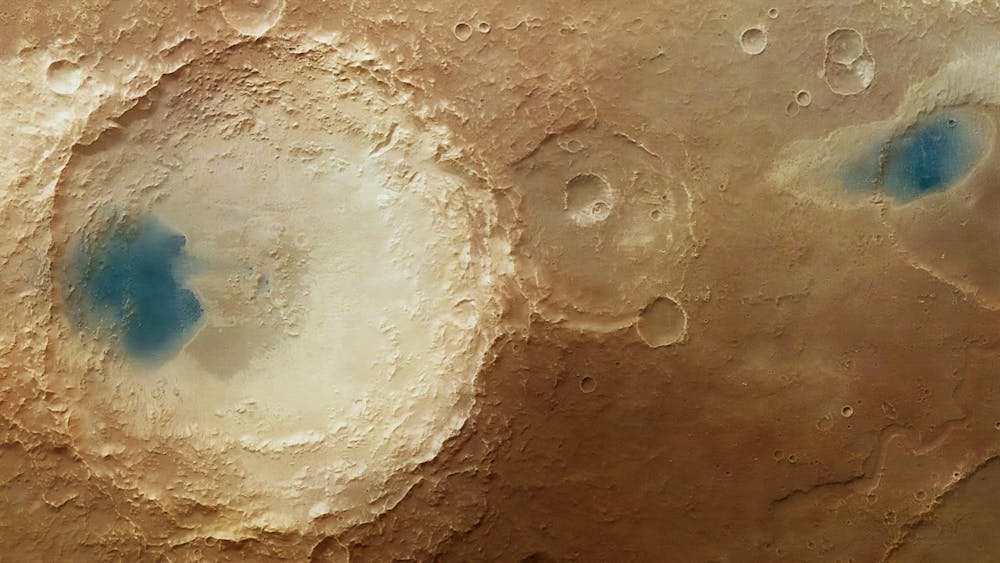The breakneck advancement of technology is bound to become one of the defining phenomena of this century. Thinkers across fields from medicine to philosophy have deliberated the implications of technology, yet it remains distinctly fruitful and enlightening to investigate the ways in which artists consider the unprecedented predicament before us.
Recent films, particularly in the genre of science fiction, have commented on the role of technology in altering and moderating the intangibles at the core of the human experience. Two in particular, Ridley Scott’s The Martian and Spike Jonze’s Her, bring technology up against the behemoth notion of interpersonal connection.
The Martian follows the survival efforts of an astronaut, Mark Watney (Matt Damon), stranded alone on Mars after being left for dead. From Earth, teams of NASA scientists work to establish contact and bring him home. The film in its entirety is, of course, a lesson in the necessity of human connection. Watney grows increasingly desperate in isolation and begins creating a daily video log, a tenuous stand-in for conventional interaction.
When he first starts communicating with the Jet Propulsion Laboratory, his unadulterated joy is evident as he successfully deploys the probe to send and receive messages from Earth. Later, Watney finds his colleague’s computer to aid in enhancing communications. The camera lingers while he drags a window from her device to his, and, though subtle, it is undoubtedly illustrative of the power of technology to be a tool for connection.
This harkens back to an earlier scene of Watney hunting through his crew’s belongings in search of a hexadecimal table. Much to his surprise, he stumbles across several ’80s computer games and is more than thrilled. It works as a parallel to his prior finding of and listening to his colleague’s ’70s disco playlist. Evidently, the search for connection is realized through technology and formidably bridges the gap that transcends not only space but also time.
Her paints a different picture. Set in the near future, Theodore (Joaquin Phoenix) falls in love with an operating system named Samantha (Scarlett Johansson). Her only embodiment is that of a virtual voice, though she sounds lifelike and possesses a fully formed personality of her own. The film charts their relationship as well as Theodore’s relationships with those around him, from relatives to friends to strangers.
A sequence at a pool party about halfway in is especially illuminating of the film’s thematic interests. Theodore spends most of the time chatting with his goddaughter, yet their scene together is framed with Theodore’s face cut out. Instead, it is his earpiece, containing Samantha, that is foregrounded. She works as the mediating third party with a presence that, though unseen, is pervasive and takes the place of Theodore.
The use of color throughout Her drives a comparable point home. Moments tinged warmly with yellow are often those marked by authentic and affectionate personal interactions. Meanwhile, the design of Samantha and the devices she inhabits are red. Visuals involving these two colors often depict them starkly divided, forcing a binary choice; for example, this is exemplified by the striped dress worn by Theodore’s goddaughter. Technology and humanity appear not to be building upon each other toward a greater future but, rather, are closely intertwined in opposition.
To evaluate the varied stances of The Martian and Her is to begin to grasp the lack of a definite answer that many of us may hope to be given. The complexity of the mediation of technology is never reduced nor overlooked. Though both worlds display an implicit futurism, it is balanced steadily with a sense of hope. It makes these films understandably difficult to make sense of, helped little by the fact that didactic interpretations of the way forward are not their goal.
Nonetheless, this examination of technology proves to be worthwhile for the futures it imagines and the queries it poses. Both films offer a study set against the backdrop of a primal human instinct: in the former, survival and, in the latter, love. It becomes natural to ask how technology ensures or compromises either one. Though we are far from an answer, there is a shred of certainty: We must keep asking the question in art, in media and in society.





